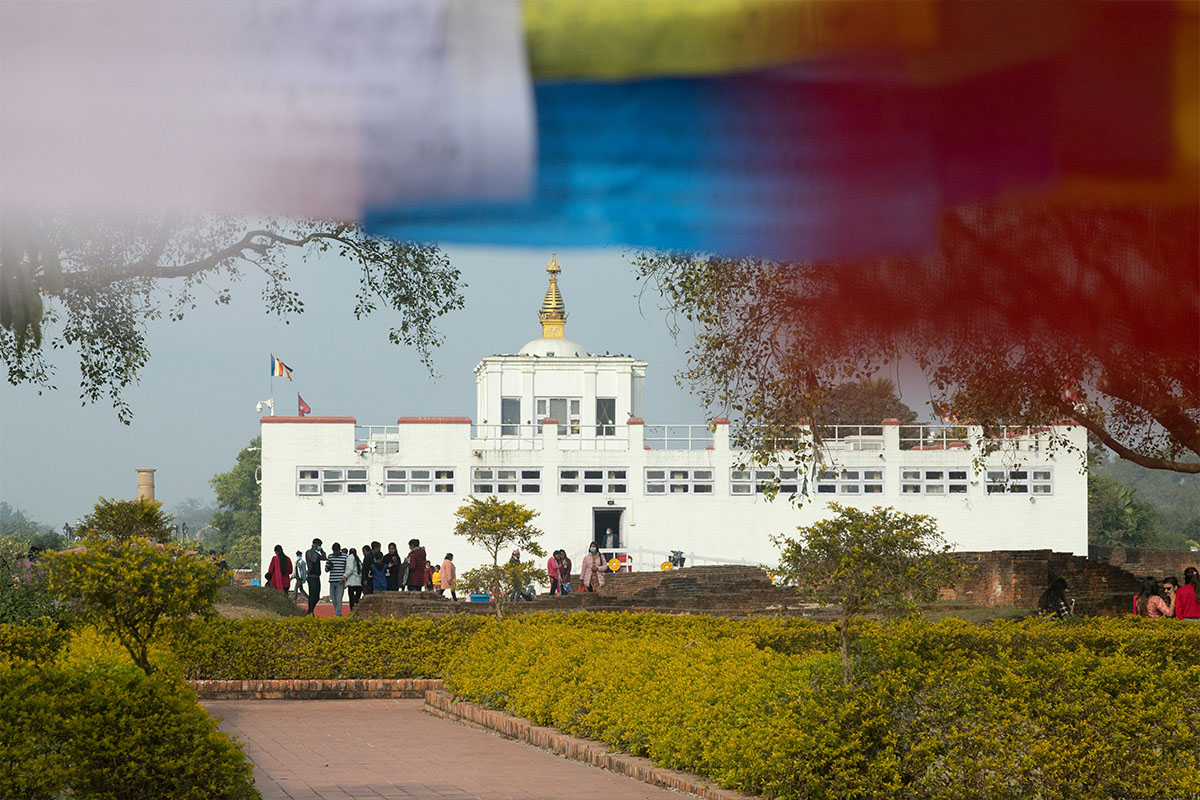How to get to Lumbini?
Traveling to Lumbini from Kathmandu is like going from the hectic capital of Nepal to the calm birthplace of Lord Buddha. Here's how one can reach there:
1. By Flight
- The quickest way to get to Lumbini is to fly into Gautam Buddha International Airport, Bhairahawa, located just 22 km away from Lumbini.
- Travel Time: It takes approximately 30 minutes of flight.
- Airlines: Buddha Air,Yeti Airlines, and Shree Airlines operate daily flights.
- From Bhairahawa to Lumbini: You can hire a taxi, take a local bus, or use e-rickshaws, which take about 30–45 minutes to reach Lumbini.
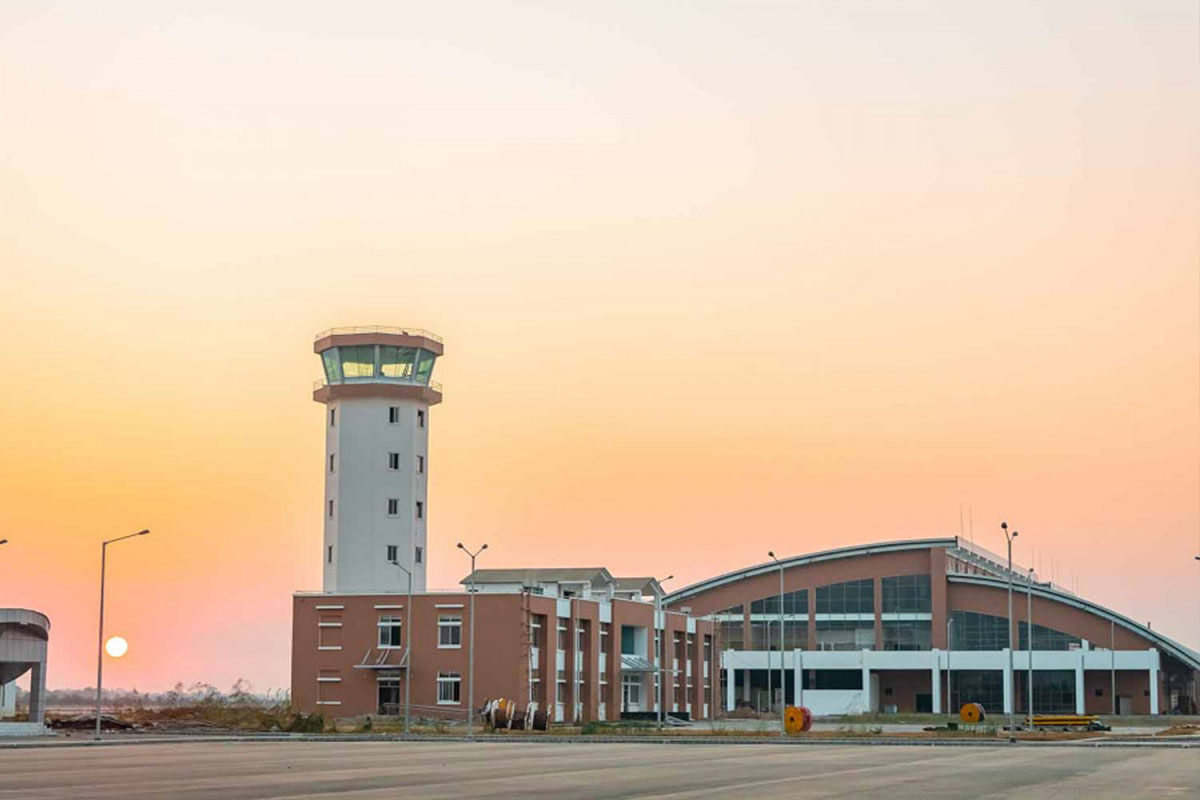
2. By Road
By road, it is a scenic route through Nepal's countryside, and it is cheap.
A.Tourist Buses
- Depart daily from Kalanki or Gongabu Bus Park in Kathmandu.
- Typically leave early in the morning (around 6:00 AM).
- The trip takes about 8 to 10 hours based on road conditions.
B. Public Buses
- They are available within the whole day from Kalanki Bus Park.
- Public buses are inexpensive, less comfortable compared to Tourist buses.
C. Private Vehicles
- Car renting or even a private vehicle for renting can also work for more comfortable travel and to manage time.
Top Attractions in Lumbini
Lumbini is the birthplace of the Lord Buddha and comes under the UNESCO World Heritage Site. This sacred destination offers the visitor the opportunity to understand the origins of Buddhism, its teachings, and its world influence. The Places to Visit in Lumbini are as follows:
1. Maya Devi Temple
The most sacred site in Lumbini is the Maya Devi Temple, exactly where Queen Maya Devi gave birth to Siddhartha Gautama in 623 BC. The stone marker designating the Buddha's birthplace inside the temple is enclosed by ancient stupas and a brick platform from the 3rd century BC. A short walk away is the Pushkarini Sacred Pond, where the Queen Maya bathed before giving birth to Buddha. The serene environment of this temple attracts pilgrims and visitors worldwide, making it a spiritual focal point of Lumbini.
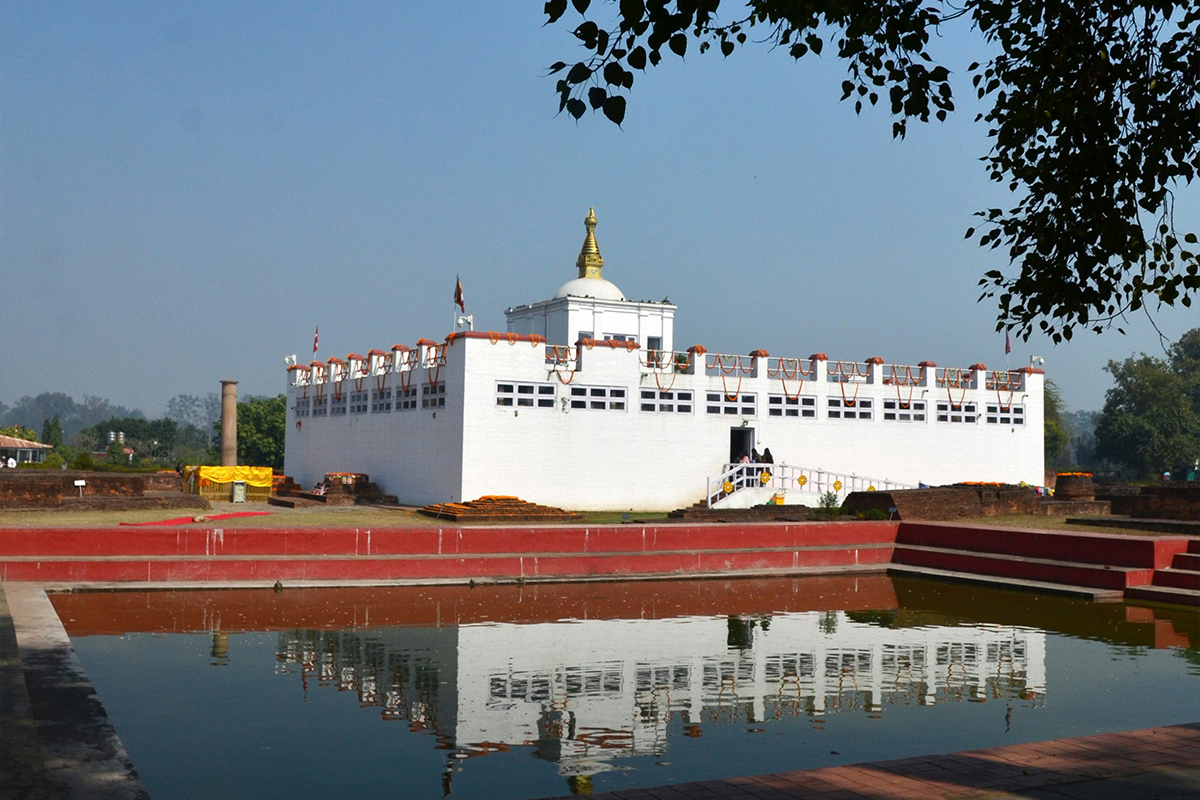
2. Monastic Zone
The Monastic Zone in Lumbini is a serene area, actually divided into two sections: the Eastern Zone and the Western Zone. In the Eastern Zone lies the Theravada monasteries that aim for simplicity and mindfulness, while in the Western Zone lie the Mahayana and Vajrayana monasteries, built by countries such as Thailand, Myanmar, Japan, and Germany. It reflects diverse architectural styles and cultural interpretations of the Buddhist tradition and thus gives quite a different spiritual and cultural experience to the oncoming visitors.
3. Ashoka Pillar
The Ashoka Pillar was erected in the 3rd century BC by Emperor Ashoka. It tells us about Lumbini as an important part of history. The pillar contains Brahmi inscriptions, narrating the visit of Ashoka and his declaration to preserve the sacred place for all time to come. Monastic Zone, one of the oldest archaeological monuments in Lumbini, is another symbol of Ashoka's Buddhist legacy.
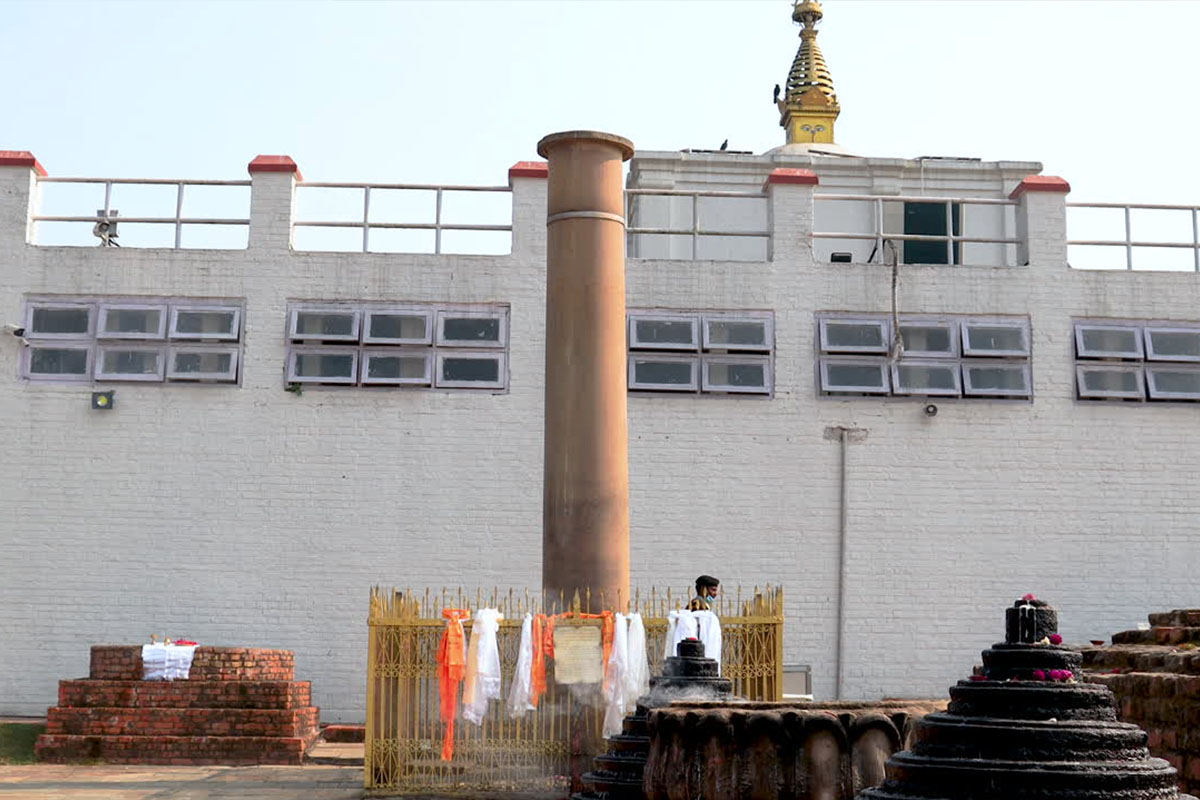
4. World Peace Pagoda
The World Peace Pagoda, built by Japanese monks, is a striking white stupa that symbolizes peace and harmony. Its towering presence, surrounded by lush greenery and reflective water features, provides a tranquil setting for meditation and reflection. The pagoda is a tribute to Buddha’s teachings on non-violence and compassion, attracting visitors seeking serenity and spiritual enlightenment.
5. Eternal Peace Flame
Other important landmarks in Lumbini include the Eternal Peace Flame, which always burns to symbolize world peace. This reminds people of Buddha's timeless message of compassion and unity. Situated right in the middle of the sacred garden, the flame enhances the tranquil atmosphere of Lumbini, evoking introspection and hope.
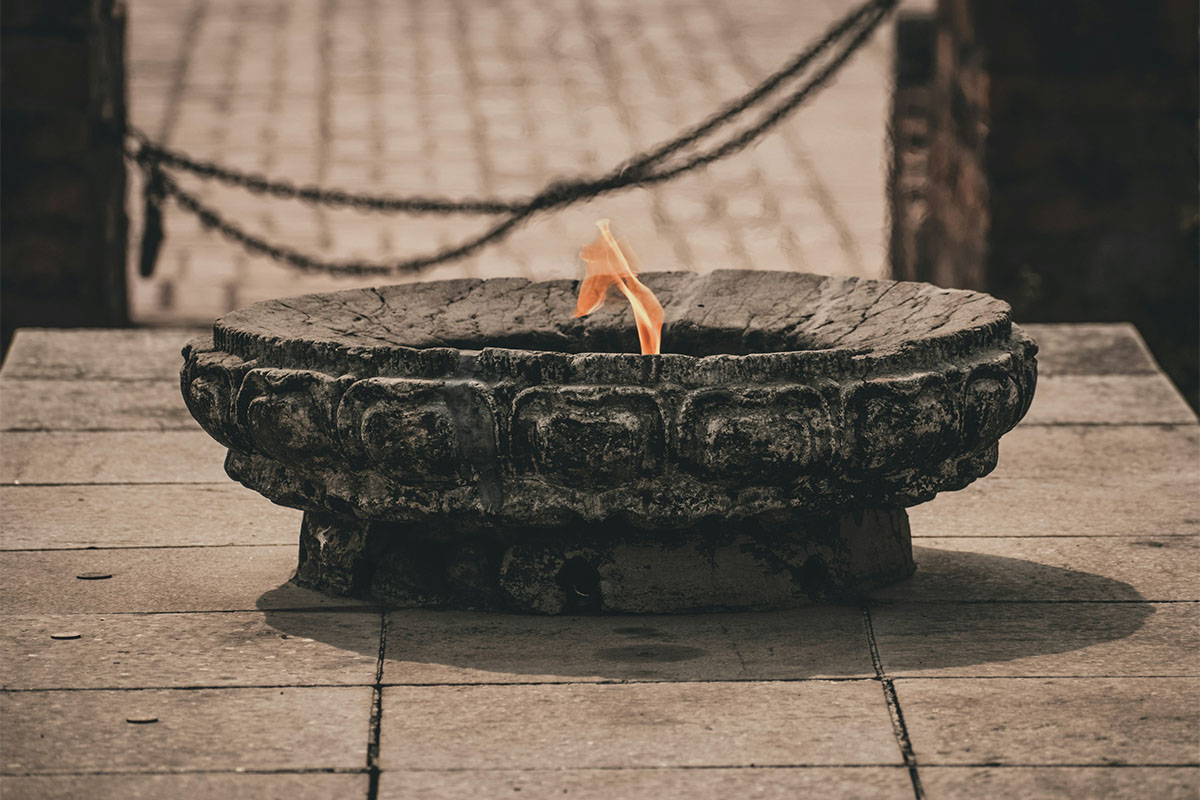
6. Lumbini Museum
The Lumbini Museum provides good insight into the life of Buddha and the development of Buddhism. It contains an assortment of ancient artifacts, manuscripts, and photographs that outline the historical, cultural, and spiritual aspects of Buddhism. A must-visit place for those interested in learning more about the teachings and dissemination of Buddhism around the world.
7. Sacred Garden
The Sacred Garden in Lumbini is aesthetically designed, encapsulating the spiritual essence of the birthplace of Buddha, an ideal place for quiet walks, meditation, and absorbing the serenity of this holy land.
Historical and Cultural Significance
The recorded history of Lumbini goes back to the 6th century BC when Buddha was in the womb of Queen Maya Devi from the Shakya Kingdom. The site received more attention after Emperor Ashoka, the believer in Buddhism, visited Lumbini in the 3rd century BC and built the famous Ashoka Pillar to denote a sign of this importance. The inscriptions on the Ashoka Pillar represents the critical history that supports Lumbini as Buddha's birthplace. Excavations have also revealed ancient stupas, monasteries, and other artifacts from the Maurya and Kushan periods, further establishing the continuous relations between Lumbini and the early Buddhist civilizations.
Culturally, Lumbini is a mixture of the whole spectrum of global Buddhist traditions. These sacred monasteries and temples form Buddhist communities around the globe-from Thailand, Japan, China, and Myanmar to Germany. Each monastery reflects the architectural styles of their respective nation, its artistic expressions, and its cultural heritage-something so unique within one sacred space. It shows international unity that Buddhist teachings are sacrosanct and transcend national barriers.
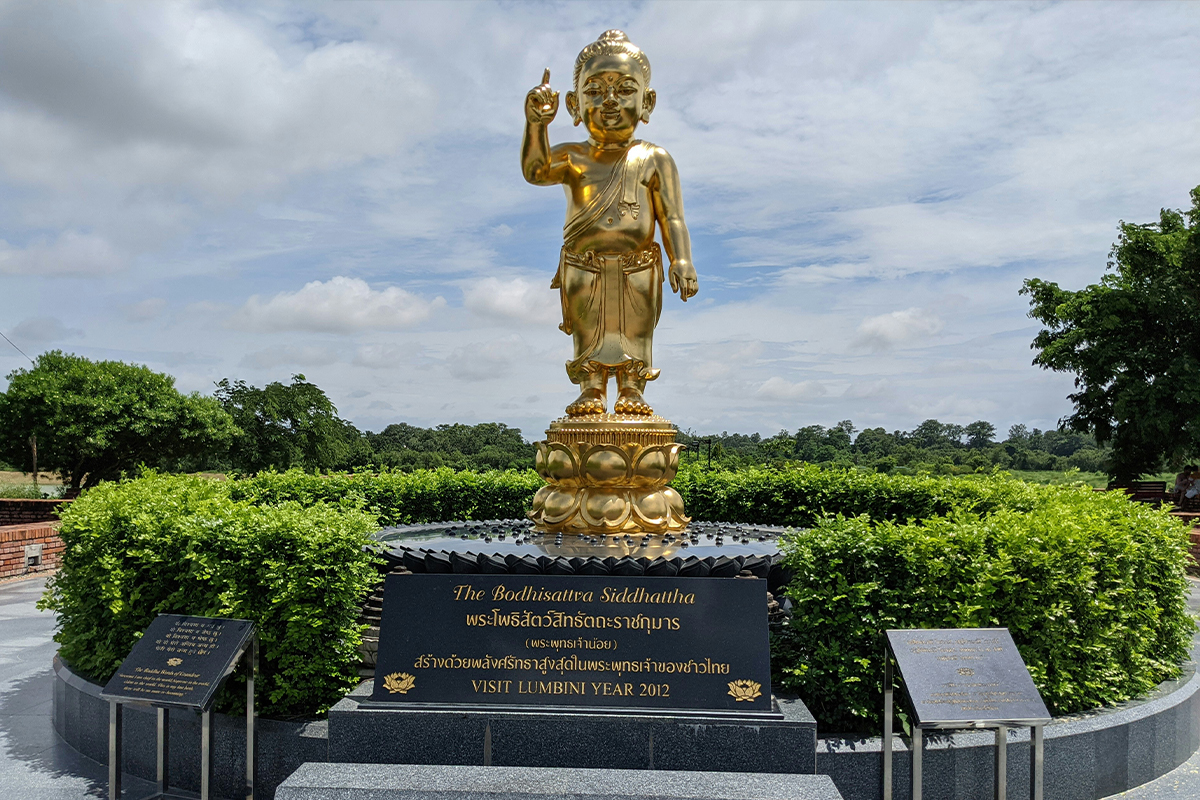
The spiritual sanctity of Lumbini is greatly engraved in its serene environment and association with the principles of peace, compassion, and enlightenment. It serves as a center for meditation, mindfulness, and self-reflection, attracting both pilgrims and non-religious visitors who seek tranquility. The site's cultural importance also transcends Buddhism into the promotion of interfaith dialogue and global understanding through its teaching of harmony and non-violence.
But apart from this religious and spiritual value, Lumbini has also contributed much to the cultural identity of Nepal. Festivals, rituals, and traditional performances remain alive in the vicinity, based upon Buddhist teachings. Events like Buddha Jayanti bring the world to their feet, events showing the eternal significance of Buddha's message and the importance of Lumbini as a beacon of spirituality.
Best time to visit Lumbini
Lumbini is an all-season destination, with anytime of the year having its own feature. The weather stays moderate during much of the year, making any time one visits a particularly great time to visit. However, the best experience will depend on your preference for weather, people, or cultural events.
The best time to visit Lumbini is during Buddha Jayanti, which usually falls in April or May. Buddha Jayanti commemorates the birthday, enlightenment, and death of Lord Buddha and is considered one of the biggest religious events to happen at Lumbini.
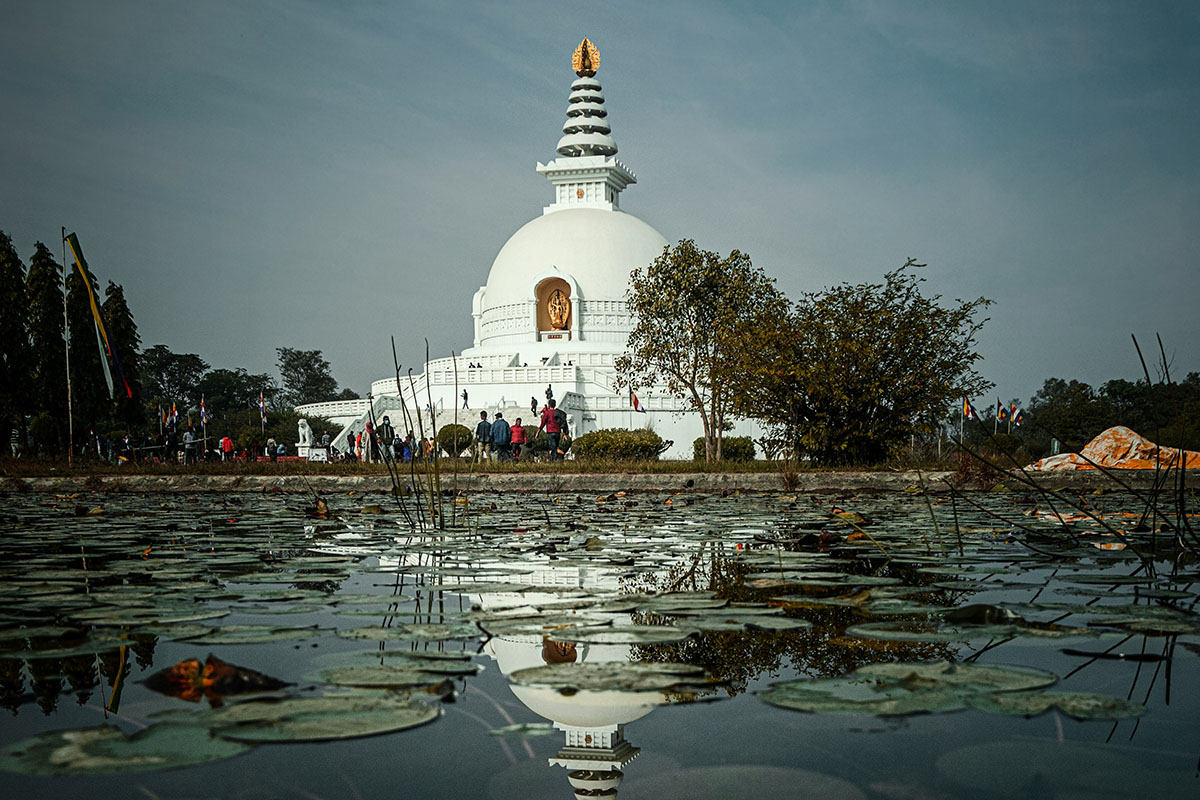
During this time, the whole place is filled with vibrant festivals, prayers, and processions. It attracts pilgrims from all over the world to share in these holy rituals; there is an aura of deep spiritual feelings in the atmosphere. Any visitor's lifetime opportunity would therefore be the visit during Buddha Jayanti in order to be deeply immersed in the local Buddhist traditions, catch glimpses of the cultural celebration, and be a part of this lifetime-transformational experience.
Nearby Attractions around Lumbini
While Lumbini itself is a spiritual and historical gem, the surrounding areas also offer incredible sites that enrich your visit. Here are the top nearby attractions worth exploring:
1. Tilaurakot (Kapilavastu)
Tilaurakot, the ancient capital of the Shakya Kingdom, where Siddhartha Gautama spent his early years as a prince, lies about 25 kilometers west of Lumbini. Archaeological studies have revealed the remains of a palace, ancient walls, and gates. It gives visitors an insight into the life of Buddha before his renunciation. It's a must-visit place for history buffs and anyone interested in the formative years of Buddha.
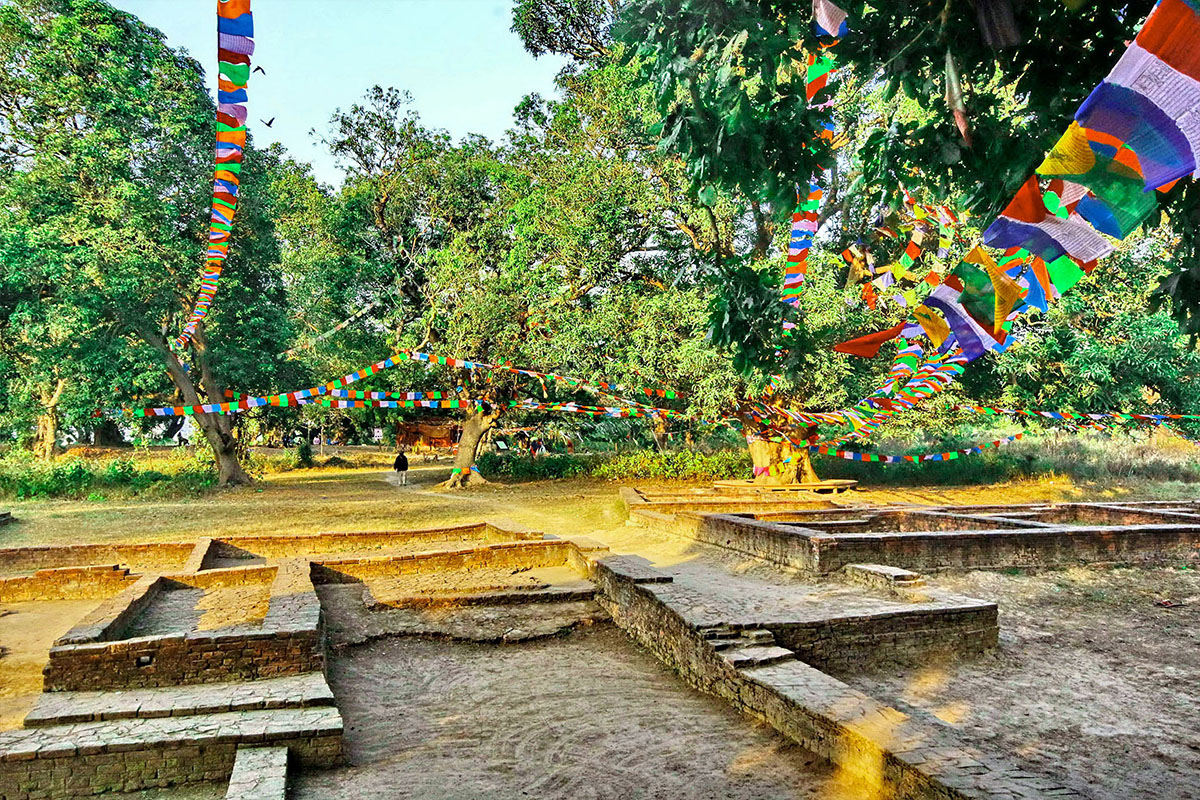
2. Devdaha
The city lies 57 kilometers from Lumbini and is regarded as the maternal home of Queen Maya Devi. According to Buddhist texts, Siddhartha Gautama spent a part of his early life here. The place is dotted with ancient ruins, sacred ponds, and temples, hence forms an essential part in the broad context of the life of Buddha.
3. Ramagrama Stupa
It is said that the Ramagrama Stupa enshrines one of the relics of Buddha and is located about 40 kilometers northeast of Lumbini. This is the only stupa which was left undisturbed and unexcavated like other stupas, purely out of spiritual respect. Thus, pilgrims and history enthusiasts will have a quiet, serene, and undisturbed atmosphere.
4. Kudan
Kudan is a small village in proximity to Lumbini and holds historical significance because it was the site where Buddha, after enlightenment, met his father King Suddhodana. It is also where his son Rahula, and several members of the Shakya clan, joined the monastic order. At this site, one can see ancient stupas and enjoy the serenity of this less-crowded site.
5. Sagarhawa
It is also known as the "Massacre Site" and is located about 12 km northwest from Lumbini. According to Buddhist texts, this was the site where King Virudhaka ordered a massacre of the Shakya clan. Today, it is a quiet and serene spot with a pond and ruins of ancient structures.
6. Kapilvastu Museum
Exhibitions in this museum near Tilaurakot include the different artifacts excavated from this area, like pottery, coins, and tools, dating back to the time of Buddha. These give more insight into cultural and historical importance.
7. Lumbini Crane Sanctuary
Lumbini Crane Sanctuary, situated within the Lumbini Development Zone, would be a great venue to watch the endangered Sarus cranes and other species of birds for nature lovers. This sanctuary epitomizes the coexistence of nature and spirituality in this sacred region.
8. Bhairahawa (Siddharthanagar)
Bhairahawa, about 22 kilometers from Lumbini, is a gateway town with modern facilities, hotels, and restaurants. It's also a good stop to shop and experience the local Nepali culture.
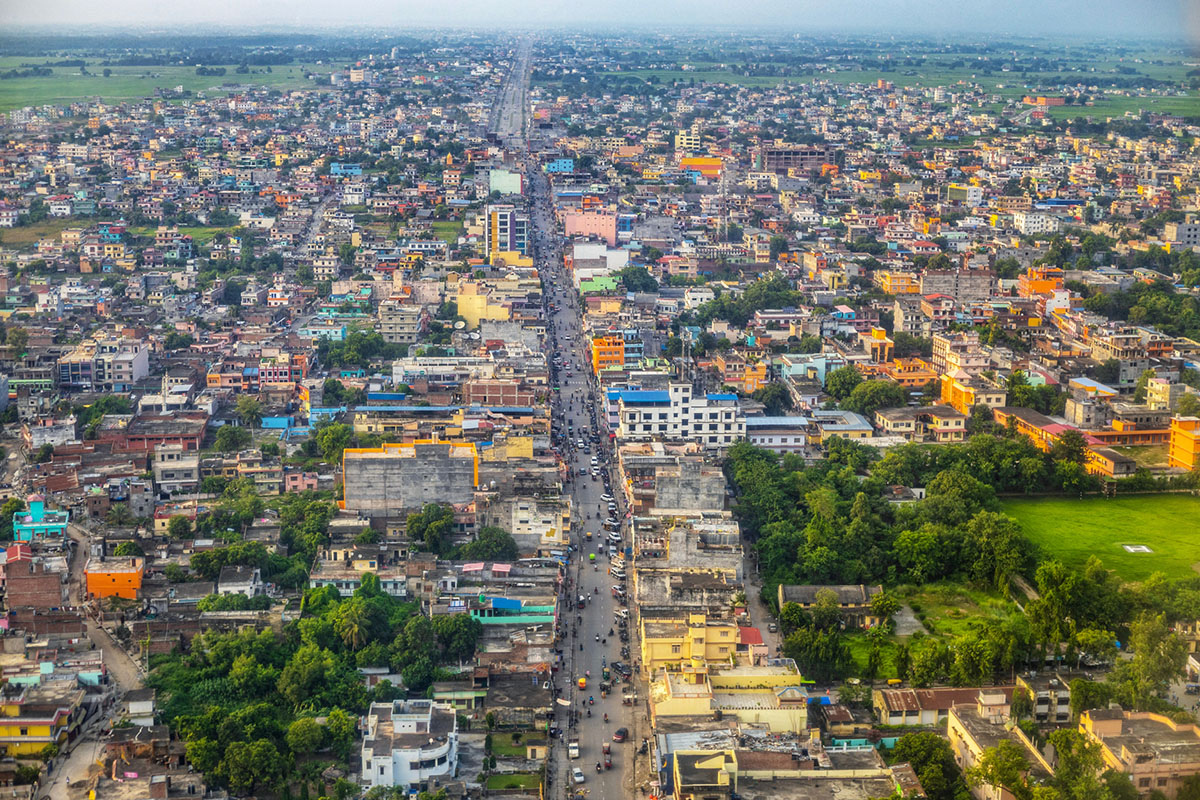
Why is Lumbini one of the Major Tourist Attractions in Nepal?
Lumbini, has recently been ranked 9th among the 52 must-visit destinations for 2025 by The New York Times. This prestigious recognition has marked Lumbini as an important global spiritual and cultural destination that attracts travelers and pilgrims from all over the world. The significance of Lumbini surpasses everything beyond the historic value that the small city represents because of being the birthplace of Siddhartha Gautam. With a rich history, its serene atmosphere, and spiritual relevance, Lumbini remains among the most venerated sites for pilgrimages globally.
Following are the major reasons why Lumbini remains one of the main tourist attractions in Nepal:
- Birthplace of Lord Buddha: The identity of Lumbini is essentially rooted in it being the birthplace of Buddha. This place is of immense religious significance to Buddhists all over the world because of the sacred Maya Devi Temple, which marks the exact spot of Buddha's birth. Pilgrims come to pay homage and meditate at this spiritual epicenter, making it a global symbol of peace and enlightenment.
- UNESCO World Heritage Status: In 1997, Lumbini was declared a UNESCO World Heritage Site due to its historical, archaeological, and religious importance. This not only signifies its importance to the world but also attracts international visitors who come to see its well-preserved heritage.
- Diversity in Architecture and Culture: The Monastic Zone in Lumbini is the home to various architectural marvels from different countries, depicting their respective Buddhist traditions. Monasteries built by Thailand, China, Japan, and Germany speak of cultures coming together from around the world and present the visitor with a unique experience of Buddhist art and spirituality from the world over.
- Historical Significance: Besides its religious importance, Lumbini is also a repository of ancient history. Many archaeological remains along with the Ashoka Pillar built by Emperor Ashoka in 249 BC gives evidence about the ancient history of the region.
- Pilgrimage and Religious Tourism: Lumbini happens to be among the four important pilgrimage sites of Buddhism, apart from Bodh Gaya, Sarnath, and Kushinagar in India. These are places where the trail of the footsteps of Buddha are followed, people meditate, and receive blessings from. This makes it a cornerstone of religious tourism in Nepal.
- Proximity to Other Historical and Cultural Sites: Lumbini is also an embarkation point for the various important Buddhist sites around the region, such as Tilaurakot, Devdaha, and Ramagrama Stupa. This is an added attraction that makes it dear to visitors to Lumbini who would get interested in exploring these sites with more convenience.
- Accessibility and Infrastructure: With the development of Gautam Buddha International Airport at Bhairahawa, Lumbini is now more accessible for international tourists. Better infrastructure-accommodation in hotels and restaurants and means of transportation-has made it quite comfortable for visitors.
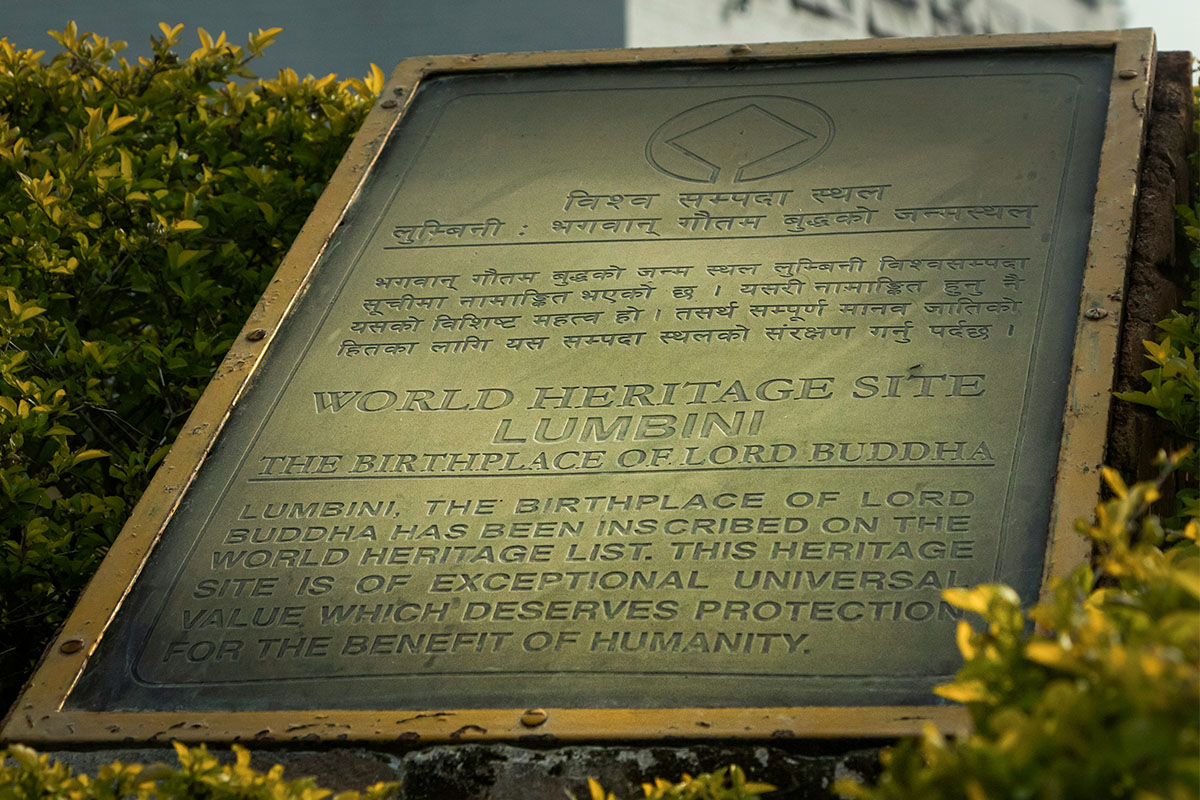
FAQs
1. What is Lumbini famous for?
Lumbini is famous for being the birthplace of Lord Buddha, the founder of Buddhism. It is a UNESCO World Heritage Site and a major pilgrimage destination for Buddhists worldwide. Lumbini is known for its spiritual significance, historical landmarks, and peaceful environment.
2. Where is Lumbini located?
It is situated in the district of Rupandehi, within Lumbini Province in southern Nepal near the Indian border. The place is situated some 300 kilometers southwest of Kathmandu, the capital city of Nepal.
3. Is Lumbini suitable for religious pilgrimages?
Yes, Lumbini is believed to be the holiest of holy sites of Buddhist pilgrimages. It attracts the whole world over to meditate, pray, and retrospect in its holy premises, especially within the Maya Devi Temple and the beautiful garden around it.
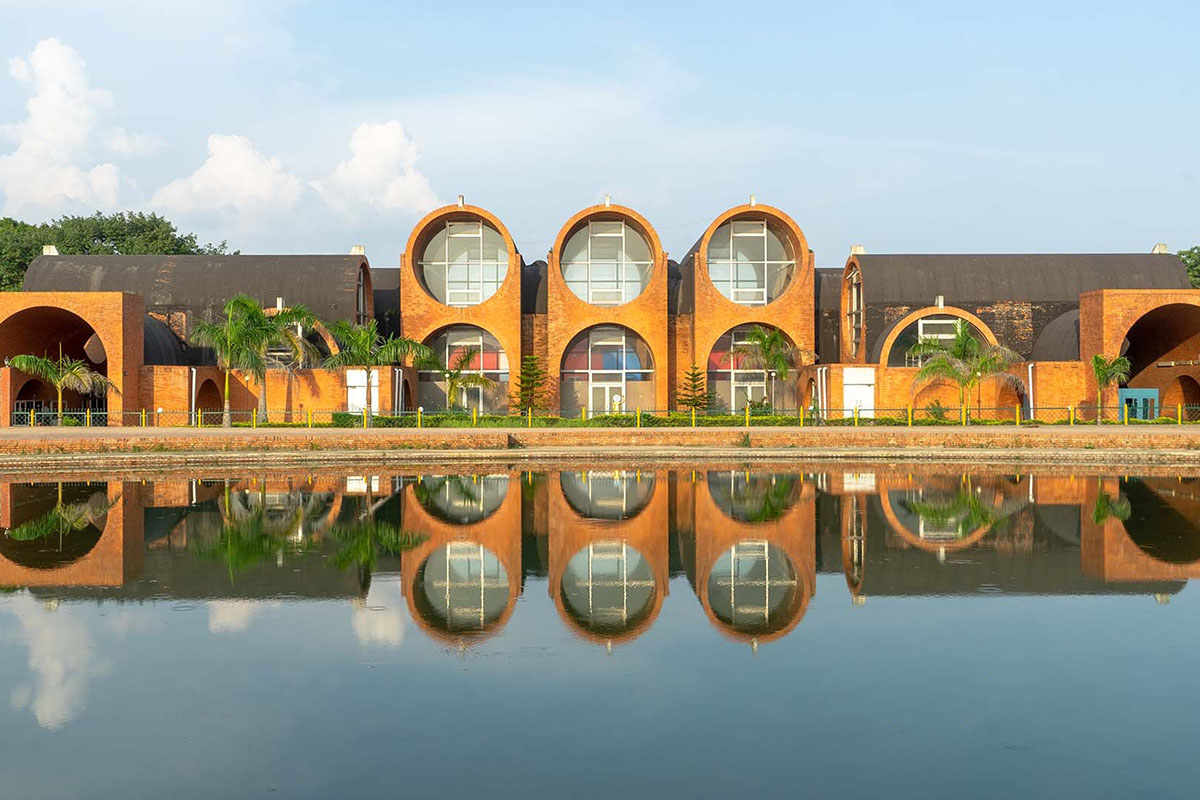
5. Do accommodations exist within Lumbini?
Yes, all classes of hotels can be found here within Lumbini, from budget to 2 and 3 star, further to a luxury resort and spa. Most of them are located nearer to the primary points of attraction for easy convenience.
6. Is Lumbini only for Buddhists?
Though Lumbini is of religious importance to the Buddhists, it is a place of peace and spirituality open to people of every religion and caste. It is a quiet place for meditation, soul-searching, and learning about the teachings of Buddha.
